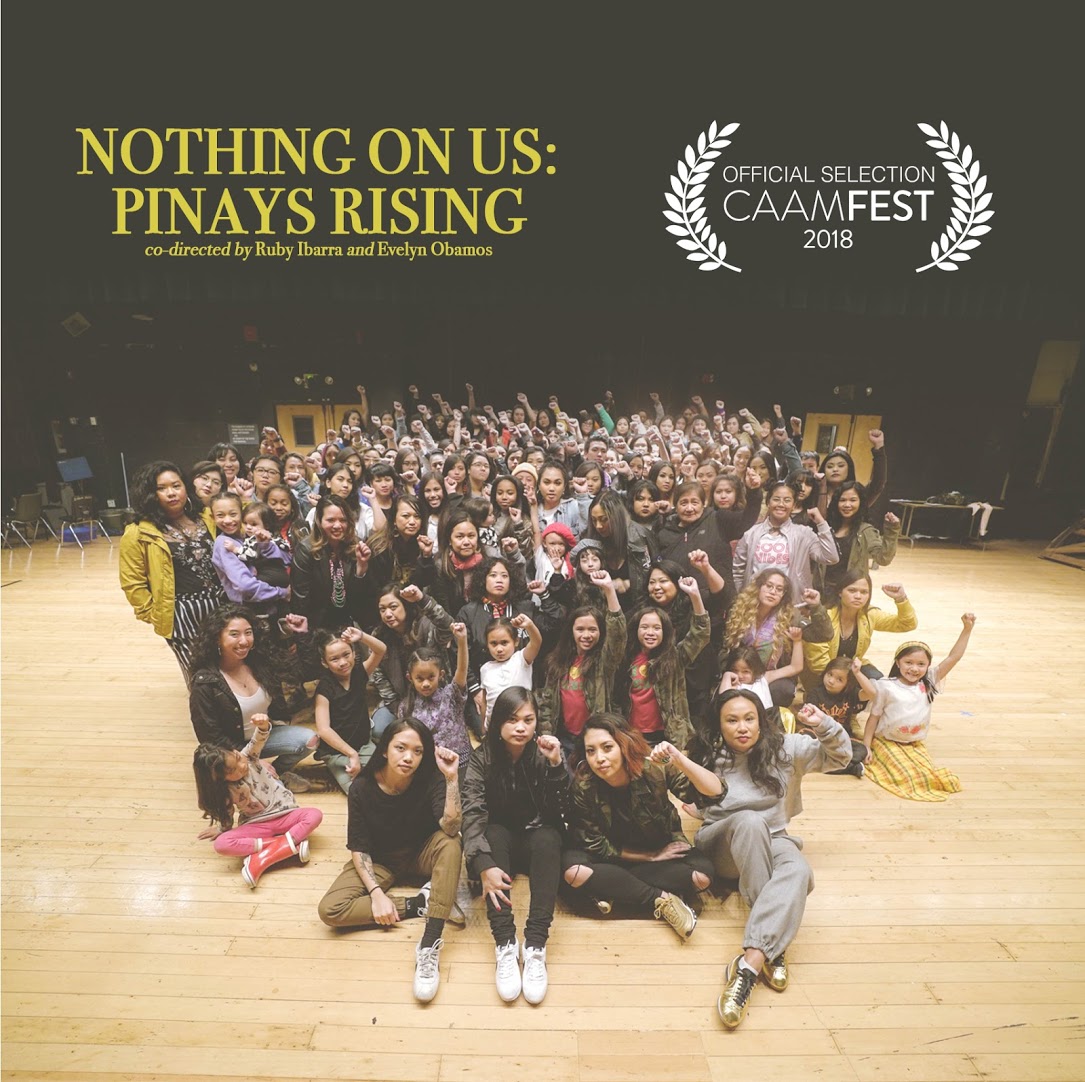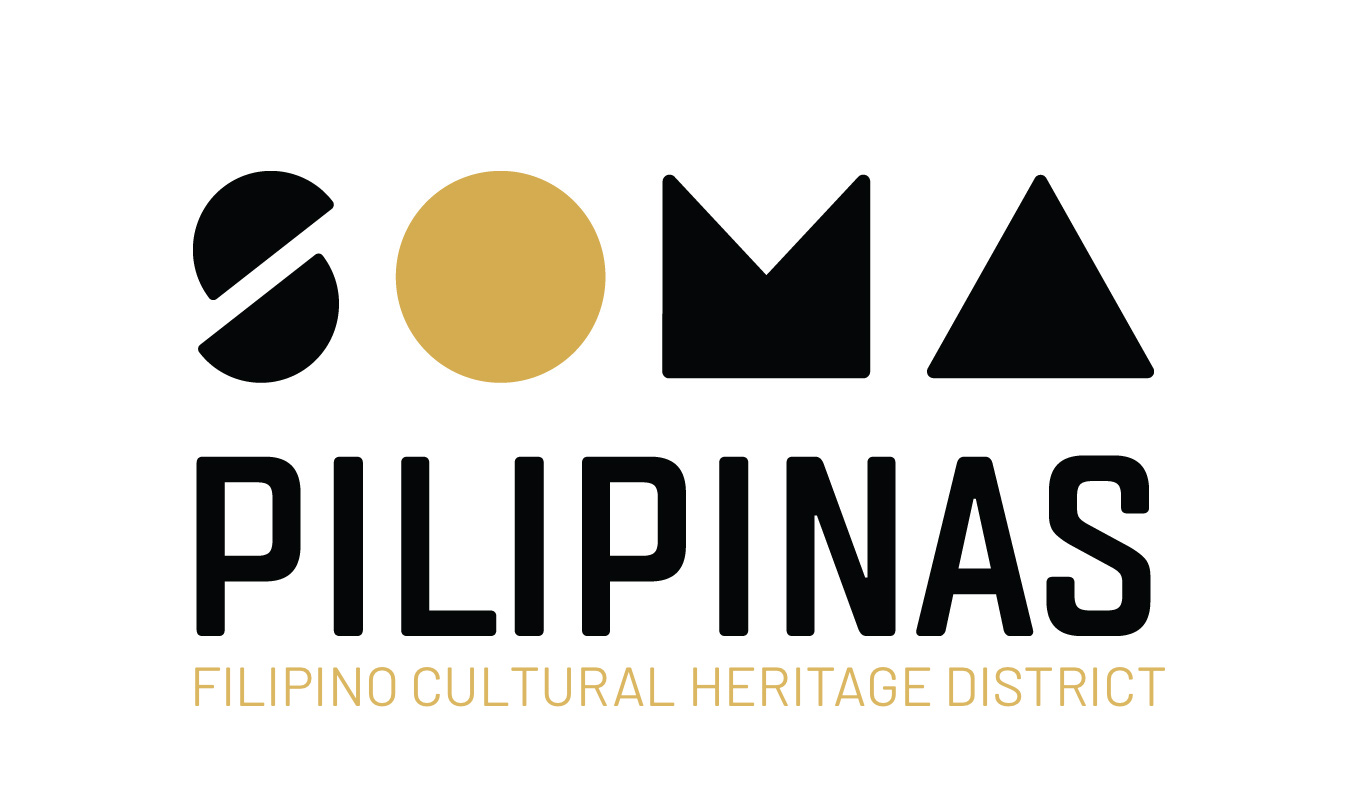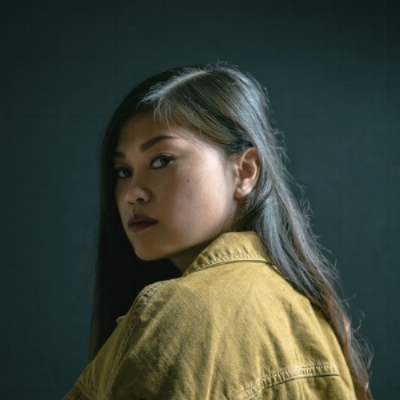"Nothing on Us": Ruby Ibarra and Evelyn Obamos' Behind-the-Scenes Documentary

"Island woman rise, walang makakatigil!"
We sat down with rising Pinay rapper Ruby Ibarra and cinematographer Evelyn Obamos to ask them about their recent collaboration premiering at this year's CAAMFest.
The duo collaborated on an ambitious music video for Ruby’s track, “Us”, which features Pinay artists Klassy, Faith Santilla, and Rocky Rivera as well as 200 crowd-sourced FilAm women of all ages and backgrounds. The music video is a visual representation of the pride and power found in being an Island Woman and the desire to share Filipina culture with the world.
In the making-of documentary to the music video, NOTHING ON US: PINAYS RISING BEHIND THE SCENES, we asked Evelyn and Ruby about their perspectives on the project and the challenges that came up during production.
NOTHING ON US: PINAYS RISING BEHIND THE SCENES premieres on May 20th at the Roxie Theater. Buy tickets here!
The music video emphasizes female empowerment but views it from a multi-generational perspective - a respect for the past and how it influences the present/future. What was your vision for the music video? How did you both end up working together on this project? Did your visions for it differ in any way?
Evelyn: Ruby and I were connected through mutual friends – shoutout to Joy and DJ Mister Rey. While meeting her was more recent, I was introduced to her music back in 2009 through a mix cd that a friend put together — a compilation of Asian American YouTubers. Most of the music I listened to between high school to college were covers, including her cover of “Best I Ever Had” with her sister, Donna. That Tagalog rap verse, though. Truth be told, I was fangirling when she asked if I could shoot the behind the scenes (BTS). I admired her as an artist even more when we jumped on a phone call. As self-identified ambiverts we commiserated on our own exhausting, yet fulfilling, almost two-hour chat on collaborating together; compensation as women of color artists; and upkeep of our passion projects with full-time jobs. We were on the same page from the get-go, she emphasized that this project was mine, as much as it was hers.
Ruby: While I was still in the process of writing my verses, I already envisioned what the music video would be like. To be honest, I included certain references such as Pandanggo Sa Ilaw in my verse consciously, with the intent to include the dance in the video. The four of us tried to approach the track in a way that would capture our respective experiences as Filipina-Americans, while at the same time, celebrating and remembering our ancestors and history. Given that the track would encapsulate elements from both the past and present, it was important for me to include imagery in the video that would reflect that. A few challenges we faced during filming were mainly due to finding a venue/location and having access to traditional clothing. With the help of Professor Allyson Tintiangco-Cubales and Freedom Siyam, we were able to utilize a space in San Francisco, and was also connected to the Parangal Dance Company, who helped a great deal with the dances during our first shoot day. I also want to highlight the help of Kariktan Dance Company, who also performed dances and provided a lot of beautiful dresses and fans.
Throughout the process of filming, my vision for the video didn’t change significantly. Of course, if funding wasn’t a roadblock, resources would have been wider and would satisfy every detail and specific images I had in my head, but ultimately, I think given that we worked within a short time frame and with just my personal budget, it was the best we could do. I actually wouldn’t have wanted it any other way-- the fact that the community came to help and donate time, resources, and talent-- I couldn’t ask for anything more special and beautiful than that!
How did you choose which images of Filipina culture and femininity to represent in the video (i.e. pandanggo sa ilaw, among other images)?
Ruby: I chose to specifically use Sarimanok, Pandanggo Sa Ilaw, and Singkil, because I found them to each portray a different sense of power and femininity. Additionally, each dance came from different regions of the Philippines, and I certainly wanted a wide representation. I specifically didn’t want to just include Maria Clara dresses in the video, because I also wanted to highlight the beauty of the dresses from pre-Spanish colonization. In the video, you also see the performers in our “street clothes,” to balance the past with the present.
Ultimately, I wanted the video to visually show that there is not one cut-out, specific image of a Filipina-- we come from different experiences and in different styles, skin tones, and appearances.
One of the repeated lyrics in the track is 'isang bagsak.' can you please explain what this phrase means to Filipino people, as you understand it (both literally and what it might represent) and what it means to you personally?
The phrase that is rapped in the hook,, “isang bagsak,” literally means “one down” and essentially refers to the fact that we all rise and fall together. To me, this phrase is powerful and speaks to what I believe to be the core of the Filipino and Filipino-American communities. We share similar struggles and experiences, but even more beautifully, there is always a sense of community and family.
Evelyn, when you first heard "Us" and Circa91 in full, what was your initial reaction? What stood out to you? Did you relate to it and if so, in what ways?
Evelyn: I think I speak for many Pinays and women all over the world when I say that I’ve never connected so deeply to a track and felt so validated as an island woman. I remember hearing different Pinay voices on the track, quickly recognizing Rocky Rivera’s and then looking up Klassy and Faith soon after. Many parts of the track mean so much to me including the bit on colorism, on mobilizing in solidarity, and crediting our presence to pinays before us. And then you have Faith tie it all up perfectly in, ‘Of all the privileges in this world, none of which you may be a benefactor of, there is at least one you bear — and that is the privilege of having been born a Filipina’. Powerful af.
In your lyrics and in your blog posts, you both talk about your experiences of immigration, especially the way it affected your parents. How do these experiences shape the work you produce? How does it shape your identities as Filipina Americans?
Evelyn, on your blog you wrote about how being a Gates Millenium Scholar was your "ticket out of the ghetto". How did your experiences as a Scholar shape your cultural identity as a Filipina American?
Evelyn: Awarded with the Gates scholarship was a tipping point. In a nutshell, I wouldn’t have been able to afford living in San Francisco without it. And to be honest, I didn’t think critically about my cultural identity that much prior to moving here. Like many children of Filipino immigrants in America I was afflicted with colonial mentality and struggled with my identity growing up. I credit much of my introspection, decolonization and self-love to Ethnic Studies and most especially, Pin@y Educational Partnerships (PEP).
Ruby: I grew up in Hayward and San Lorenzo, CA, both cities that are in the East Bay Area, with a sizable population of Filipino-Americans. Because of this, Filipino culture and arts were always a big part of my upbringing. However, it wasn’t until I attended college at UC Davis that I became aware of the issues in the community, and even shaped and understanding of my Filipina identity. After college, I used music as a form of activism and eventually became connected to organizers, activists, and community members through my music.
My experiences are everything that my lyrics are about. I’ve always wanted to create music that is honest and true to who I am and where I came from. As an artist, what is most important for me is to create a discography that will resonate with people and make people feel like they have a voice.
I am so proud of how the "Us" video turned out. This is why I am extremely excited for everyone to see the documentary. In this current music climate, we've become accustomed as consumers to constantly digest new media and move on to the next trending topic. Because of that, I feel like the appreciation for the process is lost. As a kid growing up, one of my favorite segments on MTV was "Making the Video," where I got to see how my favorite music artists videos came to be.
With this behind the scenes documentary, I also wanted to highlight all of the people who made video possible-- from the videographers/editor, to the dancers, and to the volunteers who made sure the shoot days went smoothly. This video, my album, and everything I have accomplished so far have all been a collaborative effort. Isang bagsak.
Buy CIRCA91 here!
Find Ruby on YouTube, Instagram, Twitter
Find Evelyn on her blog, Instagram, Twitter
Written by Cat Jimenez





